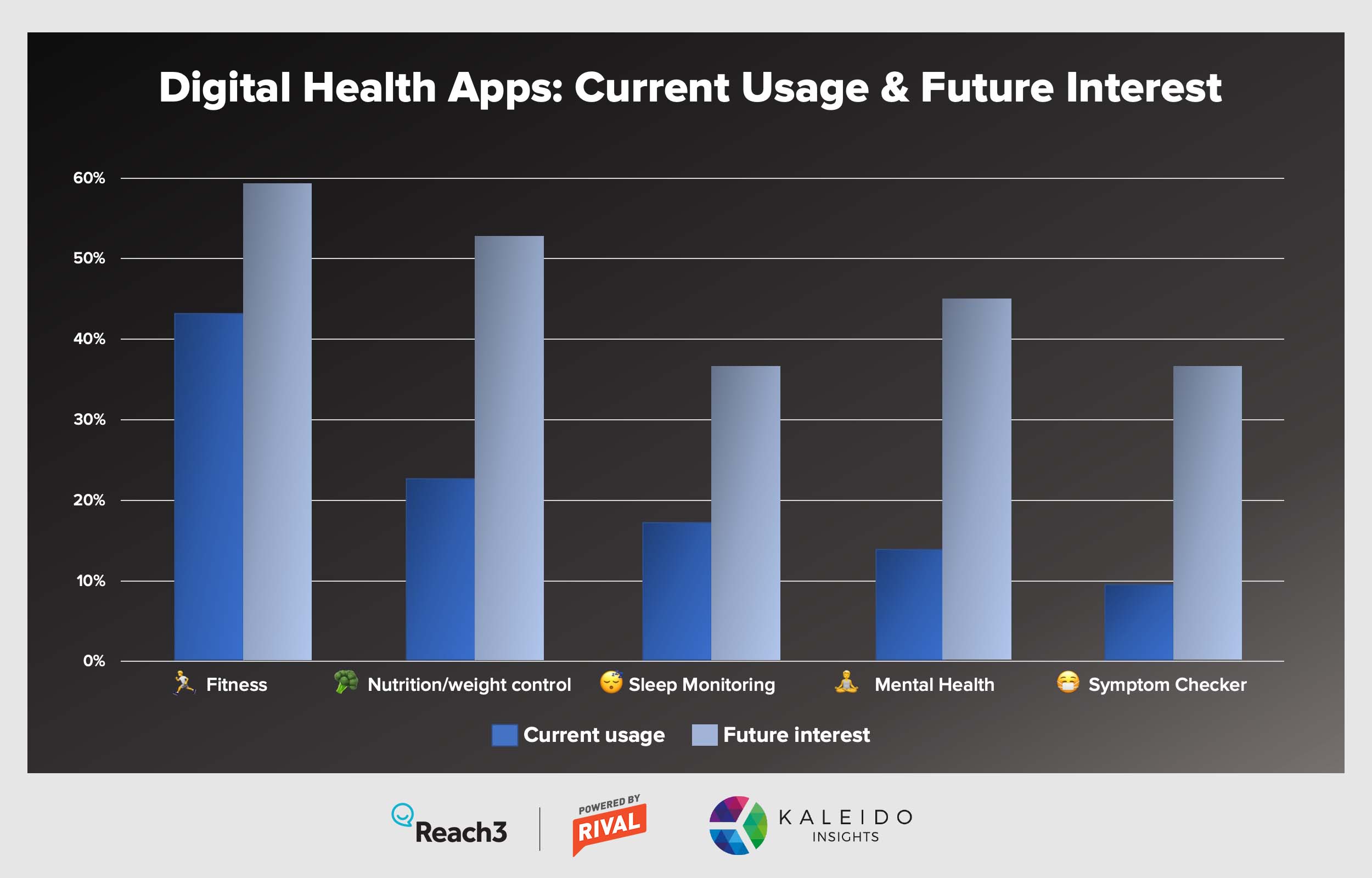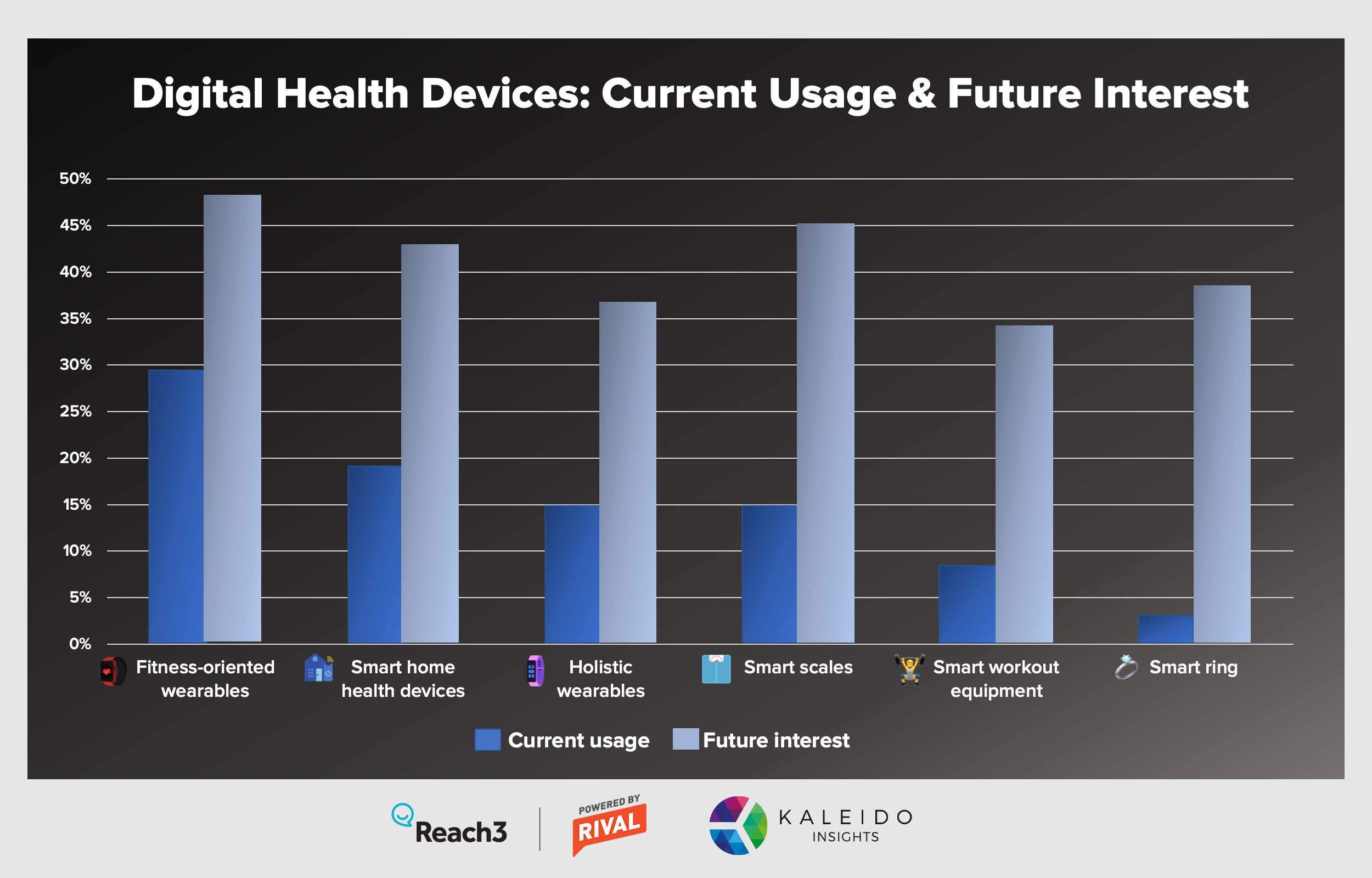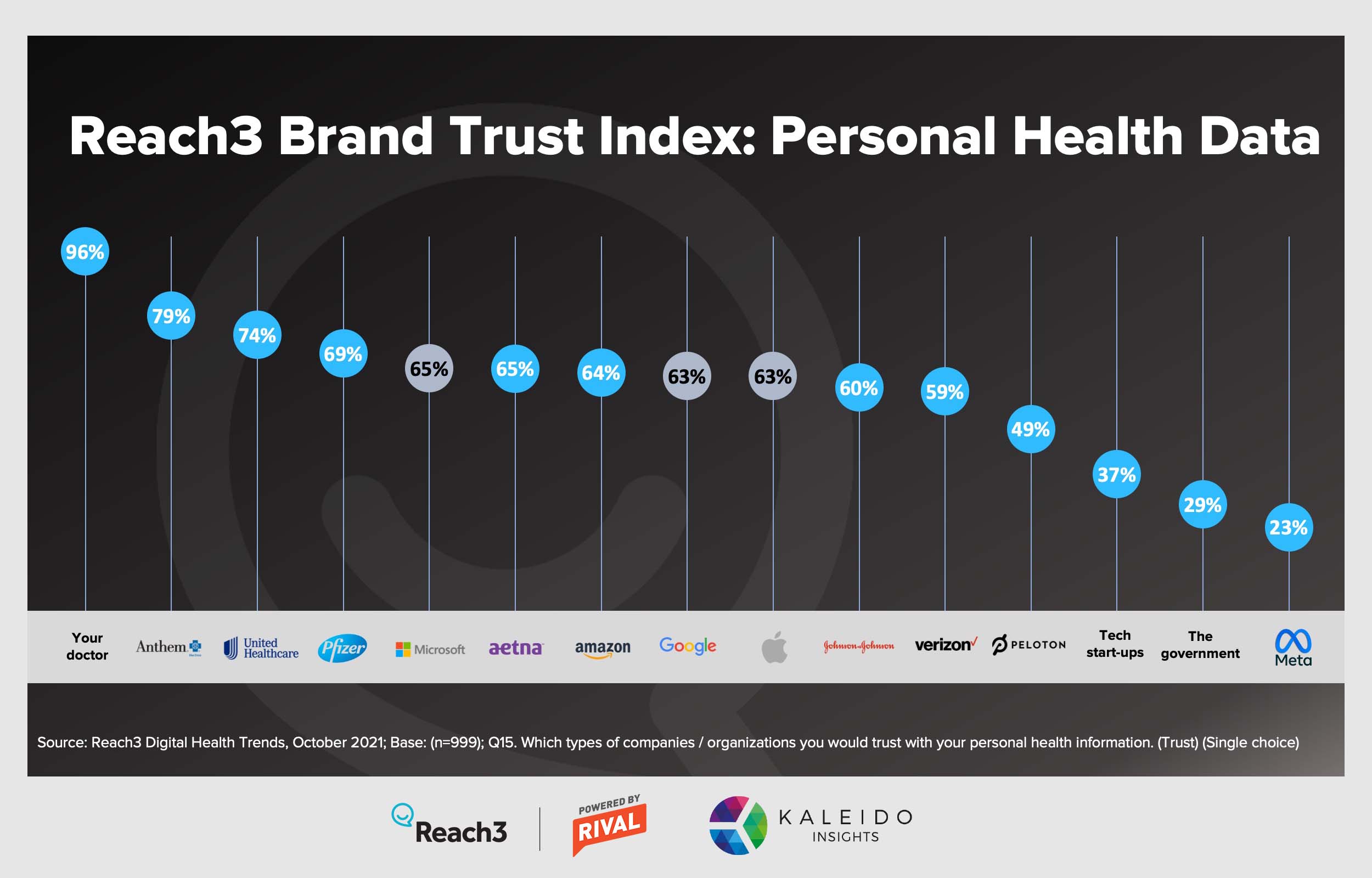Summary: Fresh data from consumers on their adoption of tech wellness and tech health consumer products, trust in tech vs health institutions, as well as surprising data on longevity data.

In 2018, a report by the Global Wellness Institute found that the global wellness economy was worth $4.5 trillion USD, growing at an average of 6.5%–nearly twice as fast as the global economy, the traditional health sector has a market cap of nearly $12 Trillion. As health and wellness technologies integrate with our routines and habits, they are gathering an unprecedented amount of data about our daily lives–over 335 petabytes per month to be exact. Nearly every brand and organization that has a stake in the health and wellness industry–insurance companies, CPGs, pharmacies, tech start-ups, and healthcare providers to name a few–are racing to leverage this wealth of data.
To help brands understand the emerging attitudes, expectations, and points of friction in this growing space, my firm Kaleido Insights partnered with my friends at Reach3 and Rival Technologies to conduct a survey around Digital Health & Wellness in the Age of Quarantine, with Matt Kleinschmit, CEO and Founder of Reach3 Insights and with Andrew Reid. We surveyed 1,000 adult United States Citizens across four generations.
A recording of the webinar is now available. Here’s a few key takeaways:
1. There are still plenty of billion-dollar opportunities for brands interested in entering the market.
According to our research, 39% of Americans are interested in adopting health-related devices and 32% in adopting health-related apps. Fitness and nutrition-oriented devices and wearables made the top of the list, followed by sleep monitoring systems, mental health trackers, and other smart devices, like scales and watches.


These innovations are just the beginning; brands have plenty of opportunities to create billion-dollar industries. For example, 34% of consumers would like to know their life expectancy if accurately predicted by a tech company. So, what does this mean for your brand? The speakers said getting ongoing customer insights to track unmet needs will be key.
“Digital health and wellness is dynamically evolving,” Matt reiterated. “It will require new tools to keep a finger on the pulse of how these perceptions and behaviors are changing rapidly-evolving perceptions and needs.”

2. Consumer trust is non-negotiable for all companies–especially Big Tech
More than half of Americans say they would never trust a Big Tech company with their personal health data. However, 59% of people also say that control over their personal health data would increase their trust in the organization holding their data. As a result, brands need to gauge their relationship with consumers to understand the perceived level of trust prior to introducing any new health and wellness technologies or services.
As part of the research, we asked people to rate their level of trust with various health and wellness-related organizations, such as a family doctor, start-up tech companies, health insurance companies, and the government. People trust traditional health organizations with their health data, feeling the most comfortable with doctors, who they likely don’t view as a business. This trust, however, doesn’t extend to most Big Tech companies that are new to or have recently entered the health and wellness space, such as Meta (formerly known as Facebook).
Earning consumer trust won’t happen overnight, but the speakers said, forging the right partnerships could help tech companies bridge the trust gap in the short-term. Big Tech companies have the opportunity to partner with traditionally well-trusted health organizations as a way to quickly earn consumer trust. In return, these healthcare organizations could provide a greater range of tech services or products to their patients.


3. Life-expectancy tech is gaining traction
Most people have asked themselves the age-old question, “how long are we going to live?” We posted a similar, more tech-oriented version of the question to our participants with some interesting results:
“All things considered; would you want to know your life expectancy if it could be accurately predicted by a tech company?”
Of the people we asked, 34% would like to know their life expectancy if accurately predicted by a tech company. When asked about what they would consider a reasonable amount to pay for such services, the average value came out to $64. Interestingly, this perceived value only increased to $74 if the services included suggestions or recommendations for extending life.
“This data point was shocking to me,” Jeremiah (that’s me) admitted, adding that consumers probably aren’t willing to pay more for recommendations since most people already know what they need to do to increase their life expectancy.
Millennials are more open to life expectancy knowledge; however, under half of this age cohort are interested. Americans generally have positive feelings about the idea of knowing their life expectancy–many feel it could help them escape the overall uncertainty of life.
Summary: Digital Wellness and Digital Health are on the rise –especially in the age of quarantine.
Age, gender, and income all play significant roles in predicting what digital health and wellness trends consumers will be most interested in purchasing or adopting. For example, Gen Zs and Millennials have a greater interest in mental health (26-30%) and brain health technologies (27-35%), whereas Gen Xs and Boomers are more interested in nutrition (34-35%) and weight management devices like smart scales (25-26%). Please reach out to me if you have further questions jeremiah@kaleidoinsights.com
Great job for publishing such a beneficial web site. Your web log isn’t only useful but it is additionally really creative too. https://www.safetotosite.pro/
Everything is very open with a really clear explanation of the challenges. https://www.casinositenet.com/
This is a very interesting post. Thank you for posting a lot of interesting posts. And please visit my site!~! The name of the site is.
https://www.casinositekim.com/